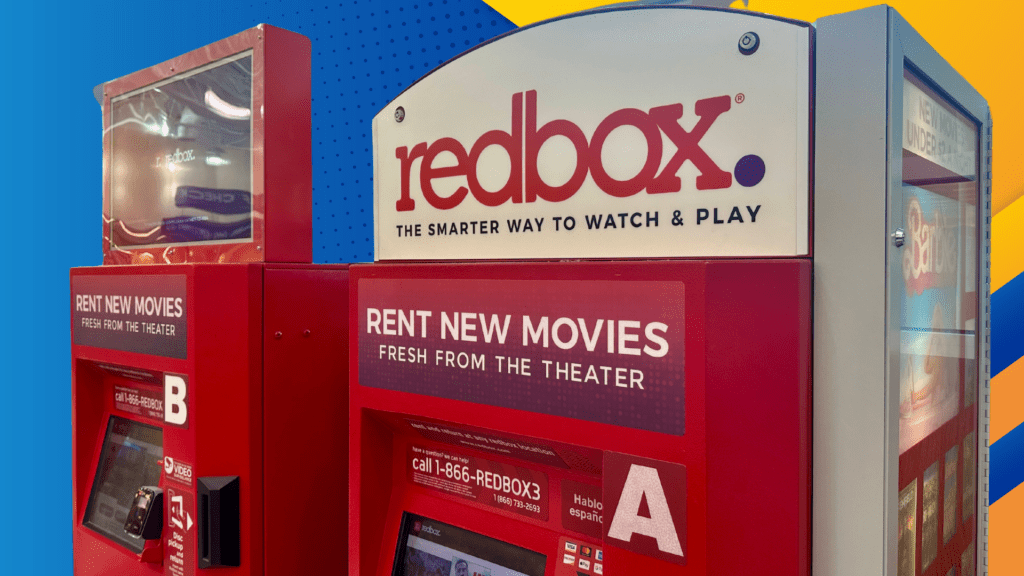Two years ago, I suggested that Redbox would make an excellent acquisition candidate for Walmart. The thinking was Redbox’s strong presence in middle America, coupled with Walmart’s vast retail network and Walmart+ ambitions, could create a powerhouse in both physical and digital entertainment. However, those plans were derailed when Chicken Soup for the Soul Entertainment scooped up Redbox. Today, with Chicken Soup facing bankruptcy and looking to offload assets, is it the perfect time for Walmart to reconsider and strategically acquire Redbox?

The Rise and Fall of Redbox Under Chicken Soup
When Chicken Soup for the Soul Entertainment acquired Redbox, the vision was to leverage the Redbox brand to expand its entertainment footprint. Redbox, known for its ubiquitous DVD rental kiosks, had already carved out a niche in regions where streaming services hadn’t fully penetrated due to limited internet access. The plan seemed sound, but Chicken Soup for the Soul Entertainment needed help integrating Redbox into its broader business strategy.
As Chicken Soup for the Soul Entertainment faces bankruptcy, the company is being scrapped for parts. This financial turmoil presents Walmart with a unique opportunity to acquire Redbox, taking advantage of its established brand and infrastructure to enhance its own entertainment offerings.
Why Walmart Should Buy Redbox

The acquisition of Redbox makes strategic sense for Walmart on multiple fronts. First and foremost, Redbox has a strong foothold in middle America, where high-speed internet is only sometimes available, and streaming services have yet to take over entirely. Believe it or not, many people still prefer renting DVDs, and Redbox makes it easy for them. By owning Redbox, Walmart can not only maintain but also deepen the loyalty of these customers by integrating Redbox into its broader ecosystem, including Walmart+. This means leveraging Redbox’s loyal customer base to boost engagement with Walmart’s other services and offerings.
Moreover, Walmart’s network of over 4,700 stores in the U.S. is the perfect place to expand Redbox kiosks. This integration could drive more foot traffic to Walmart, with customers likely to make additional purchases while renting DVDs. It’s a straightforward way to boost sales and enhance convenience for shoppers.
The Enduring Relevance of DVDs
Despite the dominance of streaming, DVDs remain important for several reasons. First, only some titles are available via streaming. Unfortunately, many beloved shows, movies, and bangers, like the sitcom Growing Pains, are inaccessible through (legal) streaming services. This gap highlights the continued value of DVDs in offering a broader range of content.
Second, owning a DVD means truly owning a title. While purchasing a movie on Amazon or iTunes might seem like a permanent solution, the reality is more complicated. Digital purchases often come with licensing agreements that can change, meaning a title could be removed from your digital library if the license expires or the service loses the rights to the content. In contrast, owning a DVD means you have a physical copy that can’t be taken away—unless you lose it or it gets damaged.
Redbox’s success in middle America has been driven by its convenience and affordability. Kiosks in high-traffic areas like grocery stores and pharmacies make it easy for customers to rent and return DVDs during regular shopping trips. Additionally, Redbox offers a cost-effective way to watch movies, appealing to budget-conscious consumers who find renting a DVD cheaper than subscribing to multiple streaming services.
Walmart’s Media and Entertainment Ambitions
Walmart has tried to tap into the media and entertainment market, targeting middle America through its Vudu service. Vudu aimed to be the streaming service for middle America, focusing on the demographic often overlooked by other major streaming platforms. This strategy included offering a vast array of affordable and family-friendly content, which resonated well with Walmart’s core customer base. However, Walmart sold Vudu and no longer owns it, making this a fresh opportunity to re-enter the market with a stronger proposition.
Integrating Retail Shopping and Entertainment
Redbox kiosks are already present in many Walmart stores, allowing customers to rent movies while shopping for groceries. However, the ramifications of Walmart owning these kiosks are significant. By owning Redbox, Walmart can collect and integrate data from movie rentals with its existing shopping data, creating a more comprehensive understanding of customer preferences and behaviors.
Combining this data with the streaming data that will become available if the Vizio deal closes opens up new possibilities for targeted marketing and personalized shopping experiences. Walmart could leverage Vizio’s SmartCast technology to track viewing habits and deliver tailored advertisements or push notifications to customers in-store and at home.
This integration can lead to innovative advertising opportunities. Imagine receiving a notification on your smartphone or smart TV about a special snack and drink promotion while renting a movie from a Redbox kiosk. This type of interactive advertising could significantly enhance customer engagement and drive sales.
Boosting Walmart+ Subscriptions
Acquiring Redbox could also play a crucial role in boosting Walmart+ subscriptions. Walmart+ is Walmart’s membership program, offering benefits like free shipping, fuel discounts, and access to exclusive deals. Integrating Redbox into Walmart+ could provide additional value to subscribers by offering free or discounted DVD rentals and digital movie access as part of the membership. This added benefit would make the Walmart+ subscription more attractive, encouraging more customers to sign up and increasing membership retention rates.
Boosting Walmart+ subscriptions is significant for Walmart because it drives customer loyalty and increases the company’s recurring revenue. Membership programs like Walmart+ create a steady income stream and promote frequent store visits and higher spending per visit. By enhancing Walmart+ with entertainment perks from Redbox, Walmart can create a more compelling value proposition that differentiates it from competitors like Amazon Prime.
The Future of Physical Media
The decline of physical media is a well-documented trend. Less than a year after Netflix mailed its last DVD, Redbox is ceasing operations and shuttering its 24,000 kiosks. The Digital Entertainment Group (DEG) noted that overall physical rental revenues declined by over 50% from the previous year, and starting next year, the industry association, DEG, will no longer track physical rental revenue separately.
Despite this, the DVD market still holds potential, particularly as a niche product. Like vinyl records, DVDs could see a revival among collectors and enthusiasts who appreciate the tangible aspect of owning physical media. As streaming continues to dominate, the appeal of DVDs as collectible items and reliable sources of content not available online could sustain a smaller yet dedicated market.
Conclusion
Buying Redbox now, as Chicken Soup for the Soul Entertainment faces bankruptcy, is a strategic move for Walmart that could enhance its entertainment offerings and reach more customers. Redbox’s established presence in middle America and DVDs’ continued relevance fit with Walmart’s mission to provide diverse and affordable entertainment. By integrating Redbox into its retail ecosystem and leveraging the upcoming Vizio acquisition, Walmart can offer a comprehensive entertainment solution that appeals to all preferences, seamlessly blending retail shopping and viewing experiences. Moreover, incorporating Redbox into Walmart+ could boost subscriptions and strengthen customer loyalty, creating a robust and recurring revenue stream.







